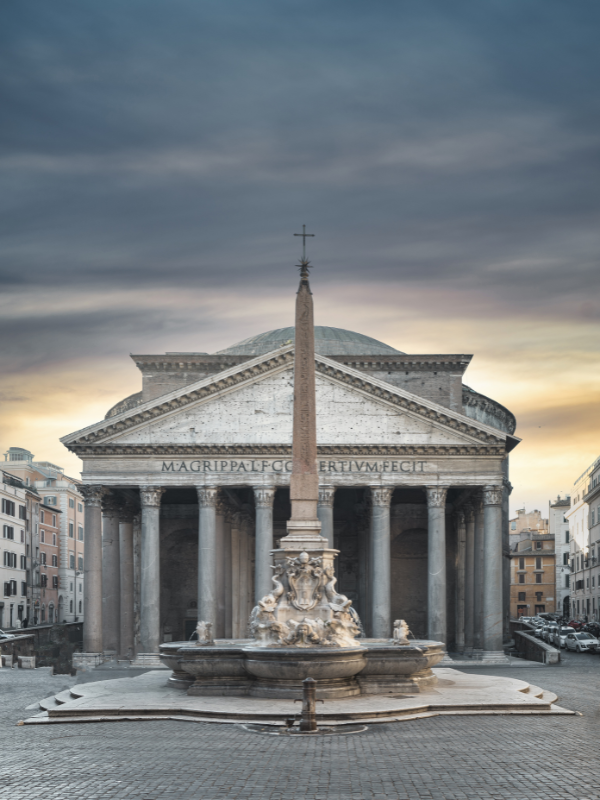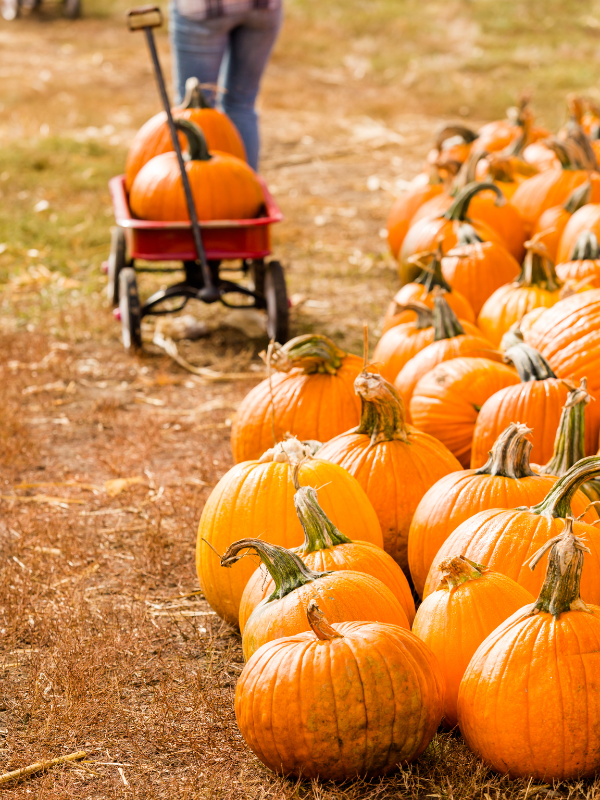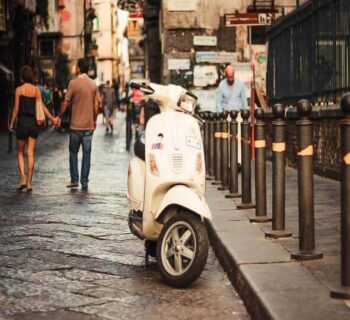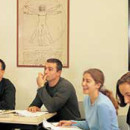The American Halloween celebration seems to have replaced the Christian ones of All Saints and the Day of the Dead. Carved pumpkins appear to have replaced chrysanthemums, but this is not entirely true. In fact, even in Italy, carved pumpkins were used in the past to avert evil omens.
But let's take it step by step and discover together some of our country's most interesting autumn traditions.
The Italian tradition
The feast of All Saints falls on 1 November and celebrates the glory and honor of all saints, even those who have not been canonized; the Day of the Dead takes place on 2 November and is dedicated to the remembrance of one's deceased and to prayers that their souls may soon get to Heaven.
In ancient times, the feast of All Saints took place on 13 May and commemorated the anniversary of the Pantheon becoming a church dedicated to the Virgins and all martyrs. Pope Gregory III suggested moving it to 1 November, citing the date of the consecration of St. Peter's Chapel to the relics of the Holy Apostles and all Saints, martyrs, and confessors. The new November celebration was intended to coincide with the Celtic New Year in an attempt to Christianise it.
In Celtic culture, the year was divided into two halves: the rebirth of nature (Beltane) and its hibernation (Samhain). The starting days of the two periods were celebrated as good omens and signs of hope.
The first celebration, that of rebirth, fell in the month of May, while the second, that of death and rest, was in mid-autumn. Incidentally, the ancient Romans also held a very similar celebration to Samhain to greet the end of the productive agricultural period: it was called Pomona, in honor of the goddess of fruit and gardens, and during this celebration, the earth was thanked for the gifts received, and fruit was offered to the deity to ensure its future fertility.
After the conquest of Gaul, the two pagan festivals were joined and began to be celebrated between the end of October and the first days of November. With the arrival of Christianity, a spiritual and religious significance was added to pagan rituals, and the celebration of the stillness of nature also became a way to commemorate those who had passed to the afterlife. To avoid the discontent of populations still strongly attached to ancient traditions, however, it was decided not to overlap the two celebrations but to place them side by side: even today, All Saints' Day falls on 1 November, while 2 November is the day dedicated to the commemoration of the dead.
The idea of devoting a day to prayers for the souls of the dead dates back to the ninth century and is attributed to Benedictine abbot St. Odilo of Cluny. Legend has it that, as he was very devoted to the souls in Purgatory, he had been very shocked by the story of a hermit who had said she often heard the wails of the souls in purgatory accompanied by the demons’ curses addressed to the abbot. At these words, Odilo had ordered all the monks to set 2 November as the solemn day to commemorate the dead, and since then the tradition has remained unchanged.
Even nowadays in Europe, and especially in Italy, it is usual to prepare special sweets that recall the Day of the Dead in their names (bones of the dead, beans of the dead, horses of the dead, bread of the dead, o' Morticello) or feature the shape and consistency of a bone. In some Italian regions, it is even customary to place these sweets on laden tables, believing that one’s deceased will come and visit them.
The Day of the Dead and the Chrysanthemum legend
On the Day of the Dead, people traditionally visit cemeteries and lay bouquets of flowers, especially chrysanthemums, on the graves. In addition to their beauty, the choice to use chrysanthemums certainly derives from their great availability at this time of year and from the fact that they were once less expensive than they are today.
A legend widespread throughout Italy tells of the origin of the chrysanthemum and explains its symbolic meaning of hope: a child, already fatherless, begged the angel of death not to take away his seriously ill mother as well. The angel was moved to pity and promised to give the woman as many years to live as flower petals he could bring him. But during that icy autumn, the child could find only a few bare daisies and, in desperation, split each petal into many. The angel, moved by the gesture, decided to give his mother many decades of life and to make this new flower, with its many petals, grow all over the fields.

Pumpkin in Italian tradition and language
As we said at the beginning, although the tradition of placing terrifying-looking pumpkins behind doors and windows on the eve of All Saints seems purely American, there are numerous examples of this custom in Italy. In Tuscany, for example, until a few decades ago, there was the game of zozzo or dry death. During the summer, farmers hollowed out a pumpkin, carved it into a face, and placed a candle inside and outside the house after dark to scare passers-by. Even today, in some areas of Sardinia, the feast of Sant'Andrea is celebrated: on the night of 30 November, adults walk the streets armed with broilers, knives, and axes, trying to frighten the youngsters and children who are wandering around with scary pumpkins carved in the shape of skulls and lit inside by candles.
Be that as it may, it is interesting to note that pumpkins are often connected to heads. As such, in the Italian language, the word for pumpkin is featured in some idioms. For example, when you hit your head, you take a zuccata, a pumpkin-hit; to be an empty pumpkin, to have no salt in your pumpkin and to be a big pumpkin (essere una zucca vuota, non avere sale in zucca and essere uno zuccone) all mean to lack intelligence.
The connection between an empty pumpkin and stupidity dates back to the ancient habit of farmers emptying and drying pumpkins to use them as containers to carry and hide salt. In the past, salt was precious because it was used to flavor dishes and preserve food. The ancient Romans even used it as currency (from which the word salary comes, to describe the money you receive as payment for your work) and hid it inside large hollowed-out pumpkins to keep it. As a result, those who could not keep a full pumpkin were considered reckless and unintelligent. From this comes the juxtaposition between a pumpkin and the shape of a head and the idea that an empty head (without salt) is not very intelligent.
This article inspired a podcast episode. Listen to it, practice your Italian, and learn new terms!
Scuola Leonardo da Vinci Turin
The welcoming friendly atmosphere of our school will make you feel at home and you can relax with your classmates in the small gardens of the adjacent pedestrian area.
Latest posts by Scuola Leonardo da Vinci Turin (see all)
- What is the difference between the Carabinieri and the Police? - November 26, 2025
- 5+1 scenic spots in Turin with the Scuola Leonardo - October 15, 2025
- Contemporary art in Turin? It’s also at the Scuola Leonardo! - October 1, 2025











